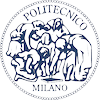
Overview
Founded in 1863, the Politecnico di Milano (Polytechnic University of Milan) is a non-profit public higher education institution located in the urban setting of the metropolis of Milan (population range of 1,000,000-5,000,000 inhabitants), Lombardia. This institution also has branch campuses in Como, Lecco, Mantova and Piacenza. Officially recognized by the Ministero dell'Università e della Ricerca, Italia (Ministry of University and Research of Italy), Politecnico di Milano (POLIMI) is a very large sized (uniRank enrollment range: 35,000-39,999 students) coeducational Italian higher education institution. Politecnico di Milano (POLIMI) offers courses and programs leading to officially recognized higher education degrees such as bachelor's degrees, master's degrees and doctorate degrees in several areas of study. See the uniRank degree levels and areas of study table below for further details. This 161-year-old Italian higher-education institution has a selective admission policy based on entrance examinations. International students are welcome to apply for enrollment. POLIMI also provides several academic and non-academic facilities and services to students including a library, housing, sports facilities, financial aids and/or scholarships, study abroad and exchange programs, online courses and distance learning opportunities, as well as administrative services.
University Snapshot
Control
![]() public
public
Entity
![]() non-profit
non-profit
Size
![]() very large sized
very large sized
Selectivity
![]() not reported
not reported
University Identity
| Name | Politecnico di Milano |
|---|---|
| Name (English) | Polytechnic University of Milan |
| Name (Non Latin) | |
| Acronym | POLIMI |
| Founded | 1863 |
| Motto | |
| Colours | |
| Mascot | |
| Screenshot |  |
| Video Presentation |
University Location
| Address | Piazza Leonardo da Vinci, 32 Milan 20133 Lombardia Italy |
|---|---|
| Location Map and Satellite View | |
| 02 2399 9738/6923 | |
| 02 2399 2237 | |
| Other locations | Como, Lecco, Mantova and Piacenza |





Social Media
Introduction
Social media can be a powerful tool for Universities to communicate with current students, alumni, faculty, staff and the wider community. But how can social media be important for prospective students? Read our article about the importance of Social Media for universities and prospective students to learn more.
Social Media
uniRank publishes brief reviews, rankings and metrics for some of Politecnico di Milano's social media channels as a starting point for comparison and as an additional selection tool for potential applicants.
Politecnico di Milano's Facebook page review
Politecnico di Milano's X page review
Politecnico di Milano's Youtube page review
Politecnico di Milano's Instagram page review
Politecnico di Milano's official LinkedIn profile
n.a.